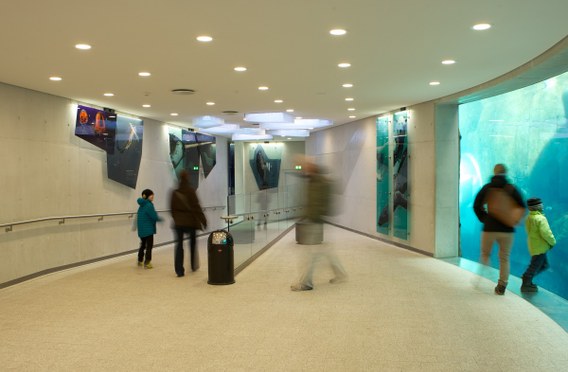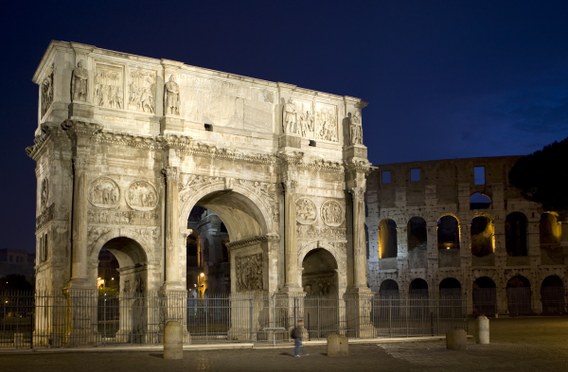Art & Culture
Creating the right environment
Lighting for art and culture requires a delicate balance between the needs of people, artefacts and architecture. It also requires a fine appreciation of drama and mood, and the ability to balance the wishes or needs of performers or artists against the requirements for safety and visual performance of the general public.
When lighting within theatres or music venues it is important that lighting of bars and public spaces helps create and preserve an ambience, putting people into a receptive mood for a forthcoming performance and preserving this feeling during intervals within the performance. This requires a certain amount of flexibility in the lighting installation to allow it to adjust between the requirements of lively or more contemplative entertainment programs.
In all types of space designed for art and culture care should be taken to ensure a brightness balance throughout the space. As people move between exterior areas that may have a high level of ambient light, through reception spaces and into the building interior the brightness will decrease and this has to be managed to preserve a safe and pleasant experience. Many art galleries and historic buildings have interior areas with abundant daylight adjacent to spaces with little or no daylight, either through architectural chance or design intent, and these brightness contrasts need careful management to prevent visual strain and discomfort.
In all areas the generally low levels of illuminance will require consideration on how to keep visual interest, possibly through the sparkle of highlights or careful lighting of points of interest, providing visual "glitter" and richness in potentially dim surroundings.
Best practice
The lighting of artworks requires careful consideration of the conservation needs of the artefact and the intentions of the artist. Delicate art forms such as paintings or fabrics can be damaged by inappropriate lighting. Consideration of the exposure time and low levels of ambient lighting with a carefully controlled spectrum of light can ensure artefacts are preserved for future generations to appreciate. Consideration is needed not only of the general type of the artwork but also the physical composition. For example painting tools and techniques have varied through time and also by medium (oil, watercolour, fresco, etc.) and the different compositions of paint used have different responses to light, each therefore requiring specific conservation measures. For artworks with intentionally defined form and texture, such as sculptures, the patterns of light and dark imposed by the lighting, whether natural from daylight or artificial from electric lighting, will impose a lit form on the artwork that may be against the original intensions of the artist. Therefore careful consideration of the flow of light is needed to ensure the lighting is in harmony with the artefact. Guidance on lighting levels required for conservation of artwork can be found in the CIE technical report: CIE 157:2004 – control of damage to museum objects by optical radiation.
For theatres or concert venues lighting should use some of the concepts from lighting in retail and hospitality spaces with defined areas of movement and pools of stillness delineating circulation spaces from customer service locations.
For all spaces lighting should be a guide to direct visitors to key points or along defined routes in what may be a network of large and busy spaces. The lighting should be layered with general lighting providing a background light level allowing safe movement and orientation and accent lighting to highlight artefacts and points of interest.
Taking control
Lighting should be controlled via a set of defined scenes. For theatres and music venues these could be entrance prior to a show, a scene for during a performance, intermission during a show and exit after a show. For art galleries these scenes could be very localised depending upon the artworks and configuration of display but could include lighting to allow checks before general opening, during public opening hours, for checks and cleaning after closing and a low level for security.
Whilst turning lights on and off using presence detection may not be applicable in many areas the use of a corridor function, dimming the lights to a set level in the absence of people, could result in significant energy savings whilst preserving the ambience and function of the space. For intermittently used spaces such as restrooms and back of house areas presence detection should be used to prevent unnecessary lighting being active in empty areas.


